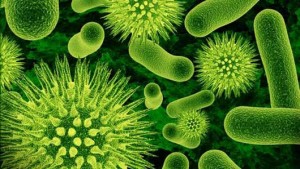 Have you ever experienced that overwhelming sense of familiarity with a place or situation, when it shouldn’t be familiar at all? For example, have you visited a restaurant in a city that you’ve never been to before and had this strange sense that you’ve been there even though you know for sure you haven’t?
Have you ever experienced that overwhelming sense of familiarity with a place or situation, when it shouldn’t be familiar at all? For example, have you visited a restaurant in a city that you’ve never been to before and had this strange sense that you’ve been there even though you know for sure you haven’t?
This sensation is known as déjà vu which, when translated literally from French, means ‘already seen’. It is also surprisingly common – around 70% of the population report these feelings, with most reports coming from those aged 15-25.
Déjà vu occurs randomly and with no prior warning of its onset. Because of this unpredictability déjà vu is hard to study and, therefore, poorly understood – unfortunately scientists in white coats holding clip boards aren’t usually waiting around to attach electrodes to you when you experience this.
The earliest reports of this phenomenon came from as far back as 1876, when Emilie Bairac coined the term déjà vu. Psychics were quick to latch on to the phenomenon as evidence that we had all lived past lives; explaining that these strange feelings of familiarity, in unfamiliar situations, came from things we had encountered in our previous lives. However, soon more scientific reasoning began to gain credibility.
 Whilst déjà vu is reported in healthy individuals, there also appears to be a strong connection with epileptic patients. In fact, many of the earliest reports of déjà vu came from patients with epilepsy. These unusual experiences were thought to be linked to seizure activity in the medial temporal lobe – part of the brain involved in sensory perception, speech and memory association. During seizures, it was found that these neurons were ‘mis-firing’ and sending confusing messages to the brain and body.
Whilst déjà vu is reported in healthy individuals, there also appears to be a strong connection with epileptic patients. In fact, many of the earliest reports of déjà vu came from patients with epilepsy. These unusual experiences were thought to be linked to seizure activity in the medial temporal lobe – part of the brain involved in sensory perception, speech and memory association. During seizures, it was found that these neurons were ‘mis-firing’ and sending confusing messages to the brain and body.
We now know that a subset of epileptic patients regularly have bouts of déjà vu before a seizure. These seizures are evoked by changes in the brain’s electrical activity, which cause over-excitation to spread across multiple regions – much like a tidal wave rippling across the brain from the epicentre of a tsunami. It is these electrical disturbances which create the feeling of déjà vu. Therefore, epileptic patients may hold the key to uncovering the origins of déjà vu – although the precise mechanisms likely differ to those in healthy individuals.
However, the precise mechanisms responsible for déjà vu in healthy patients are still highly elusive.
One theory is that the phenomenon has links to regions of the brain involved in recognising familiar objects and recalling memories. During an episode of déjà vu it is thought that these parts of the brain ‘mis-fire’ and produce the feeling of things being familiar when they actually aren’t.
Another theory is related to errors in memory processing. Usually when a memory is processed the new experience is first transfered to our short term memory and then, at a later stage, separately consolidated into long term memory. During episodes of déjà vu it is thought that a novel situation by-passes the part of the brain that processes short-term memory and instead is committed directly to our long term memory. A novel experience may then feel familiar when in fact it is not and the ‘memory’ you think you are recalling is in fact the present scene.
Despite being difficult to reproduce, scientists at Colarado State University think they may have replicated an experience similar to déjà vu in the lab. The study, headed by cognitive psychologist Anne Cleary, intended to identify whether déjà vu could be induced in participants exploring a virtual world. Subjects were given a head-mounted video screen to wear, which displayed 128 pictures of different villages that were split into pairs. Unbeknownst to the subjects, objects were positioned in the same place across the pairs to create a similar layout but with minor differences. Findings of the study suggested that déjà vu occurred most often when the layout of the new scenes were very similar to a previous scene, but not so similar that the subjects were able to recognise the new scene as being similar to the old one. In simple terms, déjà vu can occur when there are subconscious similarities between an old event and a new one, but the contrast between them is enough that you don’t recognise them as being similar.
Memories are stored in a region of the brain known as the hippocampus, these memory traces are held within groups of cells that have strong links with one another. Similar memories, such as sitting in a bar drinking a pint of lemonade and sitting in a bar drinking a glass of water a week later, are often stored across overlapping groups of cells. The brain needs a way to differentiate between these similar events and uses a process known as pattern separation.
 Scientists studying pattern separation manipulated a gene in mice, which they believed to be linked to this process. These mice were then left in a box and given a small foot-shock which made them freeze. The mice were then guided into another box but, this time, didn’t receive a shock. Mice that had an intact pattern separation gene froze in the ‘safe’ box and took a while to figure out they would not receive another. However, mice without the gene figured this out more quickly. Some scientists think that it is this circuit that can be used to explain déjà vu; this pattern separation circuit misfires so that the ability to separate new experiences from similar past experiences is lost, giving the feeling of déjà vu.
Scientists studying pattern separation manipulated a gene in mice, which they believed to be linked to this process. These mice were then left in a box and given a small foot-shock which made them freeze. The mice were then guided into another box but, this time, didn’t receive a shock. Mice that had an intact pattern separation gene froze in the ‘safe’ box and took a while to figure out they would not receive another. However, mice without the gene figured this out more quickly. Some scientists think that it is this circuit that can be used to explain déjà vu; this pattern separation circuit misfires so that the ability to separate new experiences from similar past experiences is lost, giving the feeling of déjà vu.
Déjà vu has also been linked to levels of the neurotransmitter dopamine, although research into this is sparse. This link was suggested after a healthy, middle aged doctor was prescribed drugs that are known to increase the activity of dopamine in the brain. After beginning his course of treatment, the doctor had recurrent episodes of déjà vu that subsequently disappeared after he stopped taking them. Despite this apparently obvious link little more is known about the role of dopamine during bouts of déjà vu.
Although early reports of déjà vu date as far back as the late 1800’s, we still know relatively little about exactly how and why it happens. There are many theories around that range from far-fetched ideas based on psychic and spiritual origins, to ideas that explain déjà vu as errors in the memory-making pathway. However, to elucidate the exact mechanisms, much more research is still needed.
Post by: Sam Lawrence

























